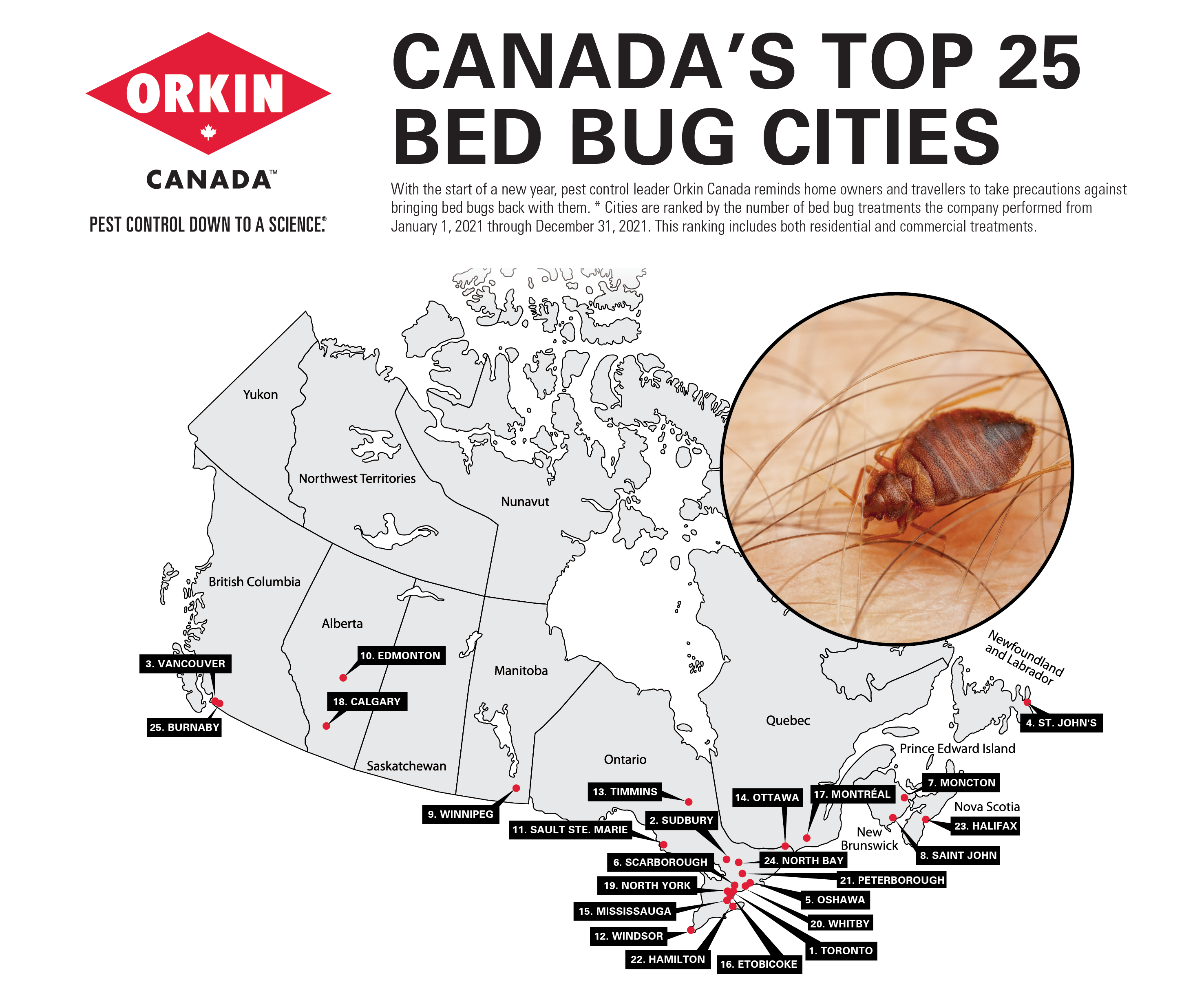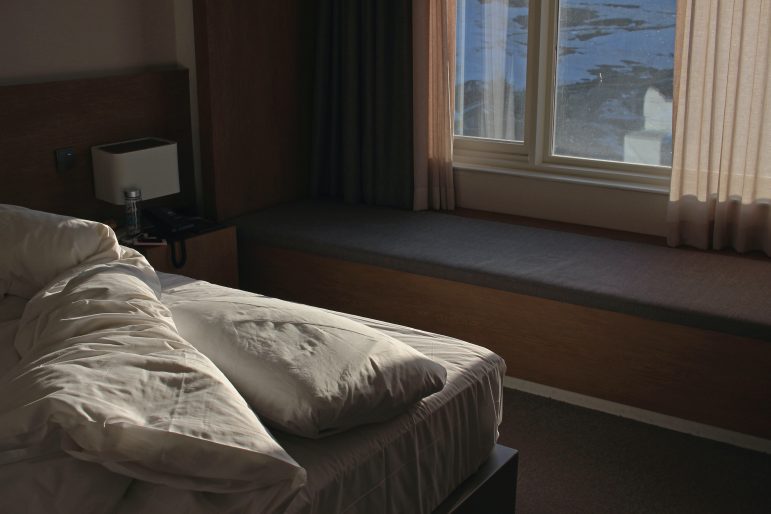Bed bugs can be a serious issue for facility managers, tenants, and residents.
The pests have a flat, broad, oval-shaped body and dark brown colouring and while very small (4-5 mm long), they are still visible to the naked eye. Bed bugs, as you might imagine, are nocturnal pests and are most active between the hours of midnight and 5 a.m. But they’re also not too picky about timing and will seek a food source during the day if they get hungry.
In a time of heightened awareness around infection control, getting any bed bug infestations under control is vital. Research from the University of Cincinnati has shown that bed bugs can carry almost 50 pathogens, which they leave behind in fecal matter. Fortunately, transmission of these pathogens to humans remains undocumented. However, the population of bed bugs can double about once every 16 days.
They get around all over Canada, too.
Orkin Canada recently released last year’s annual list of the top bed buggiest cities in Canada. The rankings show that the overall number of bed bug sightings nationwide remained similar to the year prior, and remains below pre-pandemic levels.
The City of Toronto claimed the number one spot for the third year in a row. Vancouver went up to number three from four, St John’s, NL rose to number four from six. Winnipeg, though, dropped substantially, falling to number nine from number five.
The findings by Orkin Canada are based on the number of commercial and residential bed bug treatments carried out by the company in 2021 (January 1 – December 31).
The top 10 bed buggiest cities in Canada in 2021 are:
- Toronto
- Sudbury
- Vancouver
- St John’s
- Oshawa
- Scarborough
- Moncton
- Saint John
- Winnipeg
- Edmonton

Travel bans, stay-at-home orders, and a general shift to working remotely have resulted in fewer hitch-hiking opportunities for these critters, notes Orkin, and yet they have found a way to stick around. Bed bugs latch onto people, clothing, and furniture. All it can take is an airplane seat, hotel bed or even an office chair for these pesky bed bugs to invade your space.
As Canadians start to travel, whether to the office or on vacation, so too will bed bugs. So what can be done to stop them?
Concerned Canadians can keep their defence strong through proactive prevention tips such as careful examination of furniture and clothing after guests leave a facility, drying potentially infested bed linens or clothing on the highest heat setting, and sealing cracks in walls, trims, and bed frames. A pest management professional can also help manage problems should they arise.
Think bed bugs only affect hotels? Think again.
These sneaky pests can still hitch a ride into your business through employee or customer clothing, backpacks and luggage (‘tis the season for holiday travel). To keep them out, keep any laundry — including dirty towels used for cleaning — in sealed bags until they are laundered, and remember to vacuum regularly.
In particular, be on the lookout for:
- Live or dead bugs (don’t forget the skins left behind during moulting)
- Tiny black or brown stains on upholstered furniture
- An unpleasant, musty smell—like coriander—produced by bed bug scent glands
- In non-hospitality commercial businesses, pay close attention to areas such as locker rooms, changing rooms, lunchrooms, offices and facilities where mechanical vehicles are operated such as forklifts.









